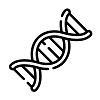17: Water and Light
( \newcommand{\kernel}{\mathrm{null}\,}\)
- Understand the meaning of photoautotroph and where in the plant the various photosynthetic reactions take place.
- Explain how the energy from light is converted into carbon-based chemical energy and building blocks in plants
- Map the movement of water from the roots to leaves and carbon-based building blocks from source to sink.
Plants are sessile and cannot move to locations that might be more suitable for growth and reproduction when environmental conditions become less than favorable. To maintain growth, plants monitor signals of light, temperature, humidity, wind, and soil water availability; these signals inform the plant on how to modify water movement and gas exchange, which also affect photosynthesis. These lessons review how these signals impact physiology and the role of photosynthesis in growth.
Thumbnail: Guttation - water droplets on leaf margin. (Public Domain; Noah Elhardt via Wikipedia)


